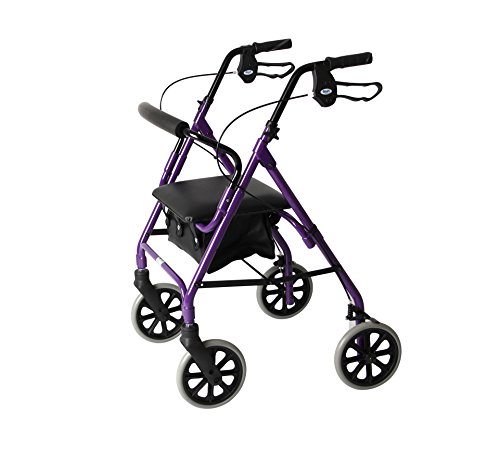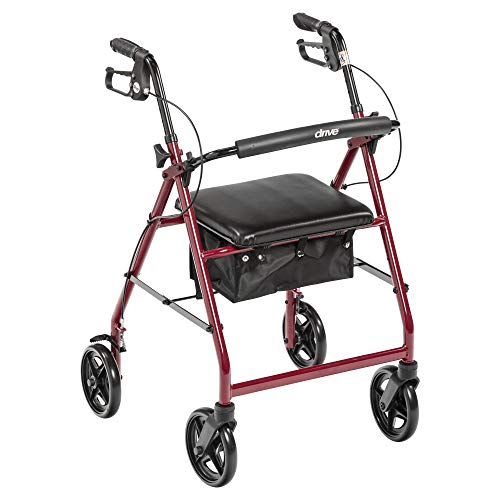Discussion Board
About Me
Locking Mechanism For Use With a Foldable Rollator
Most rollators are equipped with an locking mechanism or latch that stops them from being rolled up when in storage. This is essential to avoid the risk of a dangerous situation during transport.
The lock is typically located close to the center of the frame and may be a lever or button. It is important to understand how to use this feature.
How to fold a Rollator
Rollators are highly efficient mobility rollator walker aids designed for those who need support and stability when walking. They are easy to carry and portable, and various models are available to meet the needs of different people and budgets. Some people might be concerned about how to safely fold and unfold a walker that rolls.
Modern walkers have simple mechanisms for folding. The walkers fold quickly without the use of any tools. This makes them perfect for storage and transportation. The locking mechanism ensures that the walker won't open up when it's being transported or stored, providing users with security and safety.
Modern rollator walkers are not just easy to fold, but they also feature ergonomic designs that ensure the user's safety and comfort. They come with a big basket, comfortable handles, and an integrated brake lever that prevents accidental activation. In addition they are made from lightweight materials to ensure mobility and comfort.
The traditional rollators weigh more, and they don't support themselves when folded. This makes them difficult to transport or store. Seats are fixed to the frame, and cannot be stored in tight spaces or against objects. Therefore, it is essential for people who use a rollator to know how to fold their walkers in order for easier storage and transport.
The first step to fold a Rollator Folding is to find the locking mechanism. It's usually in the middle of the frame. When you locate it then gently lift or release it in accordance with the instructions of the manufacturer. Once the locking mechanism is released you can fold the walker by pushing its sides toward each other while holding the releases. Continue folding the walker until it's tightly locked and compacted.
 Also, you should check your walker to see whether there are any parts that are loose or signs of wear and tear. If you find any problems, be sure to repair them immediately to prevent injuries and further damage. In addition, it is recommended to lubricate regularly all moving parts of the walker in order to reduce friction and ensure smooth operation.
Also, you should check your walker to see whether there are any parts that are loose or signs of wear and tear. If you find any problems, be sure to repair them immediately to prevent injuries and further damage. In addition, it is recommended to lubricate regularly all moving parts of the walker in order to reduce friction and ensure smooth operation.
The Crossbar
The crossbar is the central bar that is used to support the frame and wheels of a rollator. It's usually made of metal and connects the handlebars to the frame's base. The crossbar offers additional stability and strength and can also hold the walker's basket and other attachments. Most manufacturers offer a variety of optional accessories for their walker models, such as baskets for storage and bags for totes. They can be positioned to the front or back of the walker or placed underneath the seat.
Many models of walker have an adjustable crossbar that folds in two directions, making them more convenient to transport and store. This is an important feature, particularly if you intend to make frequent trips or long journeys to the store or other locations. Certain models of walker come with a removable bag which can be used as an additional storage.
The brakes are another important aspect of a walker that is rolling. They are typically located on the handles and crossbar. There are a variety of brake systems available, including push-down and cable loop. The push-down brakes require the user to apply downward pressure on the spring-loaded frame in order to stop the walker from sliding. This kind of system may not be suitable for petite users who may struggle to engage the brakes, or heavier users who might unintentionally activate them.
The cable loop brake functions similar to the brakes on a bicycle. It can be engaged by squeezing the handlebars or levers at the same time using both hands. This type of brake system is more suited to individuals who have limited hand movement, and gives more control than brakes that push down.
 Crossbar can also be used to refer to the vertical stroke that connects two strokes in an alphabet. The length, position, and thickness of a crossbar will affect the legibility of any letterform. This is a major difference between serif and non-serif fonts. The crossbar of the small e, for instance, is usually described as an arm.
Crossbar can also be used to refer to the vertical stroke that connects two strokes in an alphabet. The length, position, and thickness of a crossbar will affect the legibility of any letterform. This is a major difference between serif and non-serif fonts. The crossbar of the small e, for instance, is usually described as an arm.
The Release Mechanisms
Rollators play an essential role in boosting mobility and empowering users facing physical challenges. This innovative stability system helps distribute weight evenly across a user's lower body, reducing strain on joints and muscles which allows for a smooth and comfortable movement. These mobility aids are equipped with customizable features such as adjustable handlebars and brakes, built-in seating, and storage compartments. They let users move around with ease and safety. These lightweight portable mobility aids can be covered by Medicare and Medicaid to make them more affordable.
Carbon rollators are much easier to store and transport than traditional walkers. They fold in half and can be put in the trunk. To do this, take off the basket and pull up on the crossbar to reveal two release mechanisms on each side of the frame. Then, press the release mechanisms, and push the frame sides together until the walking device shrinks to its smallest size.
The locking assembly attaches to a top, horizontal support arm 218 that joins a pair of substantially vertical tubular legs in the rear and front 220 and 221 and. Connected to the ends of the front and rear tubular legs are tubular leg extensions that telescoping 226 and 228, respectively. The telescoping extension is able to be moved from an unlocked position to an unlocked position to alter the height.
After the leg segments of the extension are in the correct position, a non-sliding grip is fixed to the lever's end. The housing is connected to the actuating lever via an extension piece that extends away and a recess designed to receive the extension piece. The recessed piece and the extension piece create an axis around which the actuating lever can be pivoted.
When the telescoping legs segment are in the correct position, the locking mechanisms engages a snap-button and biasing spring. This arrangement allows the user to engage and disengage the mechanism that folds for easy storage and transportation of the walking aid.
The Locking Mechanism
The present invention is a locking mechanism that could be used with a foldable walker or rollator. The invention addresses a requirement for a lock assembly for use with these walkers and rollators that are easy to configure between unfolded and folded positions by those who be unable to move their hands.
Typically, the device that consists of two spaced side frames and the cross brace connecting them is comprised of two handle bars. Two hand brakes are fixed onto the handles and each features a pin-actuating plunger that is connected to the plunger on the respective cross bar. When the user presses on the hand brakes, the pin actuating spout opens causing the side frame rotate into a folded state.
This kind of device has a problem in that the actuating handle must be held in one hand, while trying to press the pin-actuating plunger. This could be a challenge for those with limited dexterity or strength of hand. The present invention addresses this problem by including an locking assembly that can be operatively linked to the actuator mechanism.
As illustrated in FIG. as shown in FIG. A lock plate is placed within the bore and has an opening that can be adapted to accommodate a locking end of the pin that locks. The part of the actuating handle between the end of the handle that is force-applying and the attachment end of the body is designed to pivot with respect to both body components, such that the locking plate is moved from a first position where it blocks rotation for the corresponding tubular leg to a second position where the telescoping leg can be extended.
When the lever for actuation is operated by the hands of the user the locking pin is moved from its initial position to the next. The leg extensions telescoping can be pulled back and then rotated to their folded position by rotating the side frame. This can be done with the hand of the user remains securely gripping the handgrip 24 on the side frame. This can help reduce the amount of effort needed to fold and unfold the rollator.
Location
Occupation
Latest Post: Kamagra vs Viagra, any experience? Our newest member: cuganita4535248 Recent Posts Unread Posts Tags
Forum Icons: Forum contains no unread posts Forum contains unread posts
Topic Icons: Not Replied Replied Active Hot Sticky Unapproved Solved Private Closed

